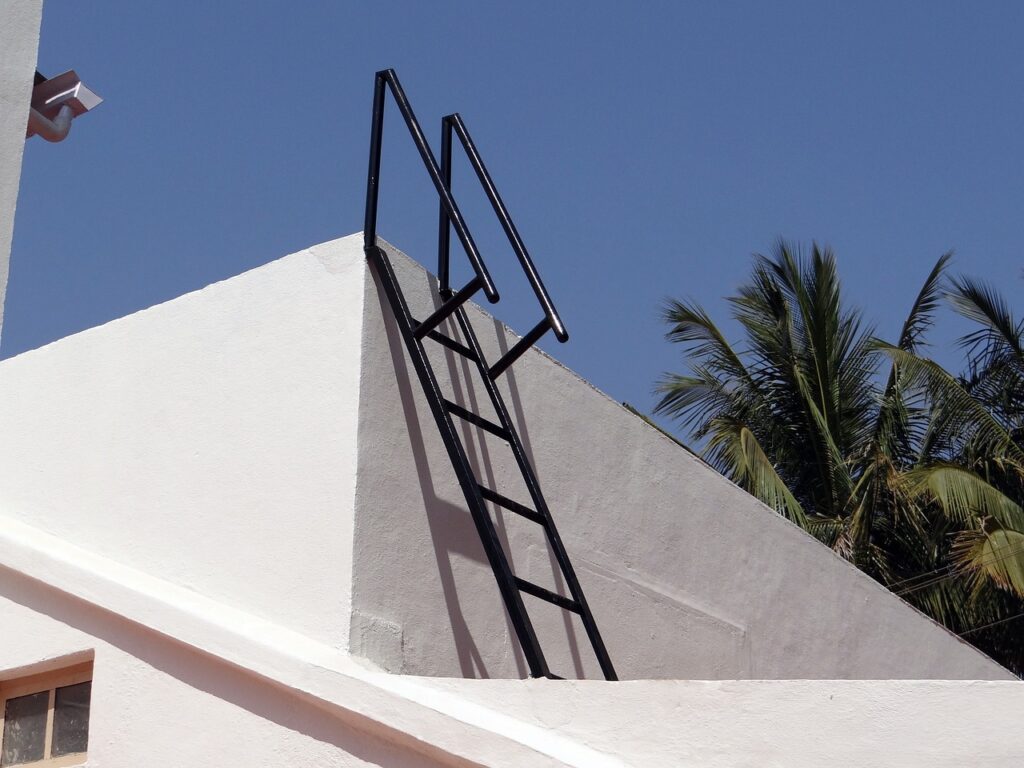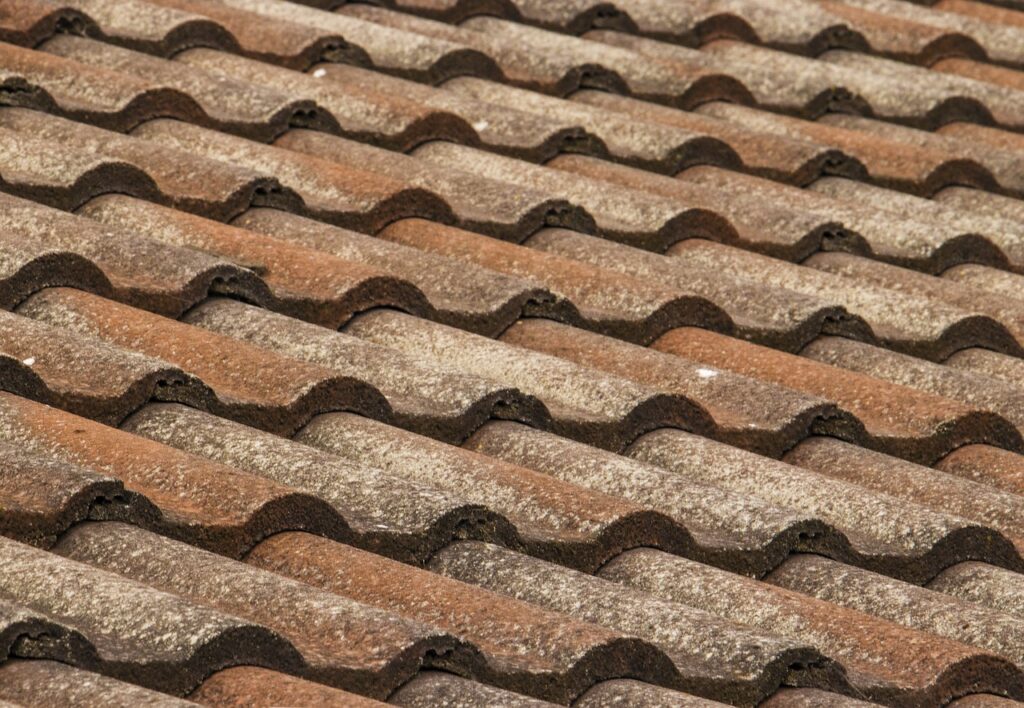Maintaining an old shingle roof can be a daunting task, but with the right steps, it can be done effectively. In this article, we will discuss the essential measures you need to take to ensure the longevity of your aging shingle roof. From regular inspections to cleaning and sealing, we will guide you through the process of maintaining your old shingle roof and provide valuable tips to help you keep it in optimal condition. So, let’s uncover the secrets of preserving and protecting your old shingle roof, ensuring its durability for years to come.

This image is property of pixabay.com.
Inspecting the Roof
Inspecting your roof regularly is an important part of roof maintenance. By checking for signs of damage, you can catch any issues early on and prevent further damage. Start by visually inspecting the roof from ground level to look for any obvious signs of damage such as sagging or discoloration. Then, get up on the roof and carefully walk around to get a closer look.
One of the main things to look for is missing or loose shingles. These can leave your roof vulnerable to leaks and further damage. Take note of any shingles that are out of place or appears to be damaged.
Another important aspect to inspect is the condition of the shingles themselves. Look for cracks or splits in the shingles, as these can lead to leaks over time. Pay close attention to any areas where the shingles meet flashing, as these are common places for cracks to occur.
Lastly, inspect the flashing around chimneys and vent pipes. Flashing is used to seal the area where the roof meets these structures, so it is crucial that it is in good condition. Check for any signs of damage or deterioration, such as rust or bending.
Cleaning the Roof
Once you have completed the inspection, it’s time to clean your roof. Removing debris and leaves is the first step in the cleaning process. Use a broom or leaf blower to clear off any loose debris that may have accumulated on the roof.
If you notice any moss or algae growth on the roof, it’s important to clean it off. Moss and algae can trap moisture and lead to the deterioration of your shingles. Use a roof cleaner solution specifically designed to remove moss and algae, and follow the manufacturer’s instructions for application.
In some cases, pressure washing may be necessary to effectively clean the roof. However, it’s important to use caution when using a pressure washer on your roof, as excessive pressure can damage the shingles. If you choose to pressure wash your roof, use a low-pressure setting and aim the spray downwards to avoid lifting the shingles.
Repairing Shingles
If you notice any missing or damaged shingles during the inspection, it is important to repair them promptly. Start by replacing any missing or severely damaged shingles. This will help prevent leaks and further damage to your roof.
Secure loose shingles by applying roofing cement underneath and over the edges. This will help hold the shingles in place and prevent them from being lifted by wind or rain.
For shingles that have cracks or splits, you can patch them using roofing cement. Apply a generous amount of roofing cement over the affected area and smooth it out with a trowel. This will help seal the crack and prevent moisture from seeping in.
Addressing Leaks
In the unfortunate event that you have a leak in your roof, it is important to address it as soon as possible to prevent further damage to your home. The first step in addressing a leak is to identify the source. This can be done by examining the area where the leak is occurring and tracing it back to the point of entry on the roof.
Once you have identified the source of the leak, you will need to replace any damaged or deteriorated flashing. Flashing is an important component of your roof’s waterproofing system, and if it is damaged, it can allow water to enter your home. Use a pry bar to carefully remove the old flashing and replace it with new flashing.
For small cracks or gaps that may be causing leaks, you can seal them using roof sealant or roofing cement. Apply the sealant or cement generously over the crack or gap and smooth it out with a putty knife. This will create a watertight seal and prevent any further leaks.

This image is property of pixabay.com.
Preventing Future Damage
Taking preventive measures can help extend the life of your old shingle roof and minimize the need for repairs. One of the most effective ways to prevent roof damage is to trim tree branches near the roof. Overhanging branches can scrape against the shingles and damage them, especially during high winds.
Cleaning your gutters regularly is another important preventive measure. Clogged gutters can cause water to overflow onto the roof, leading to moisture damage. Remove any leaves, twigs, or other debris from your gutters to ensure proper drainage.
Consider installing gutter guards to further protect your gutters and roof. Gutter guards can help prevent debris from entering the gutters, reducing the need for frequent cleaning and minimizing the risk of water damage.
It is also important to avoid walking on the roof as much as possible. Walking on the roof can cause unnecessary wear and tear on the shingles and increase the risk of accidents. If you need to access the roof for maintenance or repairs, use a sturdy ladder and work from a stable surface, such as scaffolding.
Applying Protective Coatings
Applying protective coatings to your old shingle roof can help extend its lifespan and protect it from the elements. There are various types of roof coatings available, including acrylic coatings, silicone coatings, and asphalt coatings. Each type has its own advantages and application methods, so it is important to choose the right one for your specific roof.
Before applying the coating, you must clean and prepare the roof surface. Remove any loose debris, moss, or algae and ensure that the surface is dry and free of dust. Some coatings may require a primer to ensure proper adhesion, so be sure to check the manufacturer’s instructions.
Follow the manufacturer’s instructions for applying the coating, including the recommended number of coats and drying times. Use a paint roller or sprayer to apply the coating evenly, working from one end of the roof to the other. Allow the coating to dry thoroughly before exposing it to foot traffic or adverse weather conditions.

This image is property of pixabay.com.
Maintaining Attic Ventilation
Proper attic ventilation is often overlooked but plays a crucial role in maintaining the health of your old shingle roof. Insufficient ventilation can lead to moisture buildup, which can cause the shingles to deteriorate prematurely and increase the risk of mold growth.
Ensure that your attic has adequate ventilation by installing vents and fans. These can help circulate air and remove excess heat and moisture from the attic space. Inspect and clean the vents and fans regularly to ensure that they are functioning properly.
Consider installing ridge vents or gable vents if your attic does not already have them. Ridge vents are installed along the ridge line of the roof, while gable vents are placed on the sides of the roof. These vents allow hot air to escape from the attic and promote air circulation.
Managing Moss and Algae Growth
Moss and algae can be a common problem on old shingle roofs, especially in areas with high humidity or shaded conditions. These growths can retain moisture and cause the shingles to deteriorate over time. Fortunately, there are measures you can take to manage moss and algae growth on your roof.
Preventing moss and algae growth starts with proper maintenance. Keep your roof clean and free of debris, as moss and algae often thrive in damp and shaded areas. Trim back any overhanging tree branches that may be blocking sunlight and contributing to the growth.
Apply a moss and algae inhibitor to your roof to help prevent future growth. These inhibitors are typically sprayed or brushed onto the roof surface and create a protective barrier against moss and algae. Follow the manufacturer’s instructions for application and reapplication.
Consider using zinc or copper strips to manage moss and algae growth. These metal strips, typically installed near the ridge of the roof, release trace amounts of metal ions when it rains. The metal ions inhibit the growth of moss and algae, helping to keep your roof clean and in good condition.
Hiring Professional Roofers
While many of the maintenance tasks for an old shingle roof can be done by homeowners, there may come a time when professional help is needed. When considering hiring professional roofers, there are several factors to keep in mind to ensure you choose the right contractor for the job.
Consulting with roofing experts can provide valuable insights about the condition of your roof and the necessary repairs or maintenance. They can also offer recommendations on the best course of action based on their expertise and experience.
Obtain multiple quotes from different roofing contractors to compare prices and services. This will help you make an informed decision and ensure that you are getting a fair and competitive price for the work.
Check for certifications and insurance when evaluating potential roofers. A reputable contractor should be licensed, insured, and certified by roofing industry organizations. This ensures that they meet the necessary standards and have the appropriate insurance coverage in case of any accidents or damages during the project.
Reading customer reviews and testimonials can provide insight into the quality of work and customer satisfaction of a roofing contractor. Look for reviews on reputable platforms and pay attention to any recurring positive or negative feedback.
Can You Seal an Old Shingle Roof?
One common question that homeowners may have is whether it is possible to seal an old shingle roof. The answer depends on several factors, including the overall condition of the roof and the type of shingles.
In some cases, applying a roof sealant can help extend the life of an old shingle roof. However, it is important to note that sealing the roof will not fix any underlying issues or prevent the need for future repairs. Sealing is more of a temporary solution to prevent water penetration and further damage until a more extensive repair or replacement can be done.
Before deciding to seal your old shingle roof, it is best to consult with a professional roofer. They can assess the condition of your roof and provide recommendations on the best course of action. They may recommend other options such as repairs or replacement if the roof is in poor condition.
In conclusion, maintaining an old shingle roof requires regular inspections, cleaning, and necessary repairs. By following these steps and taking preventive measures, you can prolong the lifespan of your roof and ensure it continues to protect your home for years to come. If in doubt, always consult with a professional roofer who can provide expert advice and assistance tailored to your specific roofing needs.
